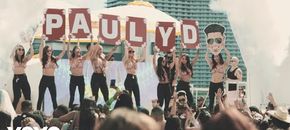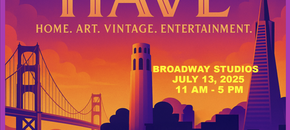DJ Q&A: Peter Van Hoesen
Belgian-born Peter Van Hoesen began DJing in the early 90s after spending several years playing bass guitar in rock bands as a teenager. After almost twenty years, Van Hoesen has tapped into a broad range of styles, exploring bass-driven techno and experimental electronic music.
This Friday, February 10, at the As You Like It will get deep and dark with a bill headlined by Van Hoesen and Stroboscopic Artefacts labelhead, Lucy, at BeatBox.
Given Van Hoesen’s innovative work as an artist, I was happy to ask him some quick questions through e-mail regarding his work and how he sees the evolution of rave.
You have cited inspiration from New Beat, a style that is essentially acid in a Belgian accent. How do you think the dance music scenes in Belgium benefited from its run and how do you feel it affected your own work?
New Beat and its preceding styles had a huge impact on people from my generation. We basically grew up on electronic music; it was easy to get exposed to it in those days. As a result many future producers were shown a possible path, away from the classical band/rock/pop setup. Around the same time electronic instruments such as synthesizers and samplers became really affordable. This created a big wave of new producers experimenting with electronic music.
With techno and house spreading so far from its source, why do you think Europe was so attracted to these styles of American dance music in the 80s and 90s?
The European audience was ready for it, that’s how I see it. New Beat is just one example of how people over here were open to those electronic sounds. In Germany a big part of the work was done by bands such as Kraftwerk and Tangerine Dream. The UK had a big synthpop movement, Italy had its electronic producers, so there are many examples. The sounds coming from the US were not unfamiliar. House and techno formed a logical progression to what Europe had sent out into the world a couple of years earlier.
The events you threw with your Foton collective were largely experimental. Describe one of your most unusual events.
The most unusual event we organized was probably Clicks ‘n Cars. For this event we teamed up with the department of multibody mechanics of the Brussels Free University. It consisted of an installation of four new, empty car frames. These were hanging from the ceiling in a square formation, with the audience placed in the middle of the square. We attached shakers to the cars. These devices are tools normally used in vibrational research. They turned the cars into gigantic speaker membranes.
We then used the cars in combination with a PA system in a surround setup. Usually up to four live acts would play throughout the night on this system. The cars would generate really strange tones, especially in the mid frequencies. I will never forget the reactions from the audience, people were truly amazed by that installation.
You also do a podcast called TimeCast. What do you hope to share with this podcast series?
We hope to get people interested in more experimental or abstract forms of music. There are a billion dance music podcasts out there, so it did not make sense to Yves and myself to have TimeCast evolve into something similar. We choose to make it a bit more challenging, and it seems to work judging by the reactions we get.
How do you feel your music is received in the US versus Europe?
Whenever I play in the US I feel that people are experiencing my sets a little bit different than in Europe. The US has a different dance culture, and this is reflected on the dancefloor. The crowd has a really profound understanding of bass – this is one thing I have noticed several times in the past – in New York, Chicago, San Francisco, Minneapolis.
Another thing I noticed is that the people are very vocal here. The dancefloor is alive. It’s quite a communal thing, and that’s great. A few weeks ago I was talking about this with DJ Qu from New York, and he basically noticed the same thing. The crowd in the US moves differently than in Europe, there is a different style of dancing on the floor. I find this fascinating.
http://www.youtube.com/watch?v=00mNzc0e_Bw
Where do you draw inspiration for your most recent and upcoming productions?
It could be anything: music, visual arts, architecture, whatever I am exposed to on a daily basis. I’m not even sure the influence is that direct. More often than not I feel that making music is more like tuning into something that already exists in some pre-formal ideal shape. The musician is there to mold it into something other people can listen to. Music is a constant discovery of pre-existing combinations.
What sorts of changes have you seen in the underground rave culture since you started DJing?
It’s definitely gone from something underground to something that generates a living for a lot of people. I don’t see that as a bad thing, it just means that sometimes the motivations have changed or the setting is different.
One thing I regret that the vibe on the dancefloor has changed a bit. The early rave and house scene attached a lot of significance to the mutual respect for each other and the environment – be that the club, the dancefloor or the world around oneself. From time to time I play at events where I still see this vibe. But a lot of times people are not practicing that approach anymore. To me this is definitely a step back. We need more respect, urgently.
A positive developments for me is the current crossbreeding of styles. It shows that the artists and the audience are opening up, they’re less inclined to think in a box as far as I can tell.
Peter Van Hoesen and Lucy headline As You Like It at Beatbox with support from Christina Chatfield and Mossmoss Friday, February 10. Tickets are $20 and can be purchased here.






